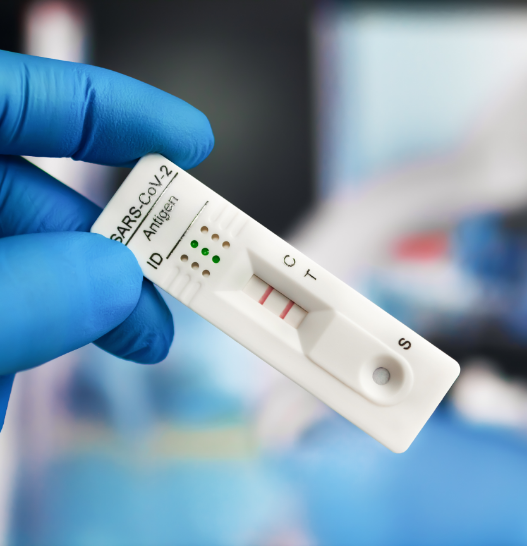We have delved deep into the topic of Human Factors Report and have compiled all the relevant info for you. In this article, we clarify the following questions:
- What is a Human Factors Report?
- What does it need to contain?
- What are best practices for preparing it?
- How does the FDA review the HFR?
- What are the biggest challenges in preparing an HFR?
Enjoy reading!
Why is a Human Factors Report so important for medical device development?
Human Factors Engineering should enable safe and easy use of medical devices. To achieve this, human capabilities, limitations and characteristics are considered and incorporated into the development process. Manufacturers must minimize potential use errors and resulting harm through targeted product design.
An HFR serves as evidence that the human factors that can affect the performance and safety of a medical device have been adequately addressed. The report includes a detailed analysis of user needs, product use, risks, and the impact of failures or human factors on product performance and safety.
The FDA requires a Human Factors Report to ensure that manufacturers consider human factors in the development of medical devices and that products comply with requirements. If an HFR is not present or does not meet requirements, the FDA may deny approval of the product or request further information or changes to ensure the product is safe and effective.
Support: Applying Human Factors
In order to be able to implement the FDA requirements in a targeted manner, the FDA repeatedly provides guidance documents that provide important assistance and create a better understanding of how implementation can be successful.
One such document is “Applying Human Factors and Usability Engineering to Medical Devices“. This explains (the title says it all) how to apply human factors or usability engineering to medical device development. Appendix A is completely dedicated to the Human Factors Report.
It says: “A HFE/UE report included in a premarket submission should provide information pertaining to device use safety and effectiveness in summary form. The report should discuss the safety-related HFE/UE considerations, issues, processes, resolutions, and conclusions.” (Source: Applying Human Factors and Usability Engineering to Medical Devices, Appendix A)
A brief interjection at this point: What exactly is meant by “premarket submission”.
This is a premarket application submitted to the FDA to demonstrate that the product being marketed is as safe and effective, i.e., substantially equivalent, as a legally marketed product. It is important to note that not all products require human factors engineering. Whether one’s own product is affected must be researched in detail in advance.
The Human Factors Report is therefore an essential part of the FDA approval process. What exactly the other required contents mean in detail and how to provide them is explained in a table that directly follows this definition in the guidance document. We will break this down for you in the next chapters.
What belongs in a Human Factors Report?
The Guidance Document provides a complete list of the contents of a Human Factors Report. The structure of the suggested content should also be followed. The reason for this: If the HFR is submitted in the specified structure, this will enable the FDA to review the documents as efficiently as possible.
- Conclusion: An evaluation of the company’s own product for safety and effectiveness for the intended user groups. In addition, the Conclusion also contains a brief summary of the Human Factors Engineering/ Usability Engineering process and its results, as well as an assessment of the residual risk.
- Descriptions of intended device users, uses, use environments, and training: A definition of the relevant user groups and their characteristics, preconditions and knowledge levels. The intended use and the intended context of use, including all factors that could affect use. All user training and education must also be documented here.
- Description of device user interface: Here you need to document a graphical representation of your product and its user interface. Labels are also included here. The operating sequence with the device and the expected user interactions with the user interface should also be recorded here.
- Summary of known use problems: This also includes all known usage problems from predecessor models and similar products or products with a similar user interface. Design changes in response to usage problems that occurred after market approval are also included in this item.
- Analysis of hazards and risks associated with use of the device: All potential use errors, the resulting risks and all risk management measures to control these risks are documented here.
- Summary of preliminary analyses and evaluations: Here you document which methods you have undertaken to evaluate your product. All results of these evaluations and the modifications derived from them must also be documented here.
- Description and categorization of critical tasks: Here you record which processes you have used to identify critical operating steps. In addition, you must provide a list including a description of the respective critical operating steps. The content must be organized according to the severity of the potential damage caused by the use. Also, any Use Scenarios that contain these critical operating steps must be described in this item.
(Source: Applying Human Factors and Usability Engineering to Medical Devices, Appendix A)
The eighth and last point is so extensive that we have separated it and listed the individual points from the Guidance document below it:
Details of human factors validation testing:
- In addition to a rationale for the selected test method, you record here the test conditions and the application conditions.
- Also included: the number of test participants and documentation of the training they received.
- In addition, you must document the critical use steps and use scenarios that will be included in the testing.
- You need to record what the successful completion of each test task looks like.
- You will need documentation describing the data to be collected and the methods used to document observations and interviews.
- Also included must be the test results: Observations of task performance and the occurrence of application errors, near misses, and usage problems.
- Other test results to be documented: Feedback from interviews with test participants regarding device usage, critical tasks, application errors and problems (if any).
- From this, you must provide the following: a description and analysis of all application errors and difficulties that could cause harm
- All causes of the problems and suggestions for eliminating or reducing additional risks
(Source: Applying Human Factors and Usability Engineering to Medical Devices, Appendix A)
What are the best practices for creating an HFR?
We have identified the following best practices for you:
- Document all your human factors activities completely.
- Make sure that all documented contents are traceable!
- Pay special attention to evidence of how potential use errors are identified and mitigated or eliminated!
- Always review your documentation when you change something.
- Try to refer to other documentation where possible to keep the HFR clear.
- Here is also the hint again: stick to the structure of the Human Factors Report suggested by the FDA!
How is an HFR reviewed by the FDA?
The FDA pays particular attention to the following items when reviewing an HFR:
- Completeness and accuracy: It is important that your Human Factors Report is complete and clear. Inconsistencies and ambiguities should be avoided at all costs! Be sure to have delivered all of the above items that the Guidance Document instructs you to deliver.
- Relevant Regulations: The Human Factors Report must comply with applicable regulations and guidance, such as the FDA Guidance for Conducting Human Factors Studies and the ISO 14971 standard for medical device risk management processes.
- Methodology: Here, the main emphasis is on selecting the right tasks and choosing the right dummies.
- Data quality: The quality of the data used in the Human Factors Report must be appropriate and correctly reflect the needs and requirements of the users and potential risks to the safety and effectiveness of the product or system.
What are the biggest challenges in creating a Human Factors Report?
Here are some of the biggest challenges in creating an HFR:
- Complexity: Human factors are often complex and difficult to quantify. It can be difficult to understand the impact of human factors on the use of a product or system and to derive recommendations.
- Data collection: collecting data on human factors can be difficult because it is often hard to find appropriate subjects or experts to collect the data. It can also be difficult to collect accurate and relevant data that can be used for analysis.
- Analysis: analyzing human factors data often requires specialized knowledge and experience. It can be difficult to choose the right methods and tools to analyze the data and to interpret the data in a way that allows for meaningful recommendations.
- Language barriers: When the product or system is used in different languages, communication with users can be difficult. It may be necessary to perform special translations and localizations to ensure that human factors are addressed in different languages.
- Time and budget constraints: Creating a comprehensive human factors report often requires significant time and resources, especially if extensive data collection and analysis methods are used. It can be difficult to provide these resources within a tight schedule or budget.
- Communication: the results of a human factors report can be complex and difficult to understand, especially for people who are not familiar with the subject matter. It is important to communicate the report’s findings in a clear and understandable way to ensure that they can be understood and acted upon by relevant individuals and groups.
Conclusion
The guidance document “Applying Human Factors and Usability Engineering to Medical Devices” provides the basic structure for the Human Factors Report and gives advice on what the individual sections must contain.
It is especially important to follow the FDA-recommended structure of the report, to document all content completely and according to specifications, and to communicate your findings in a clear, concise, and easy-to-understand manner.
Need help with your Human Factors Report or usability documentation in general? Feel free to get in touch via our contact form. We look forward to hearing from you.



